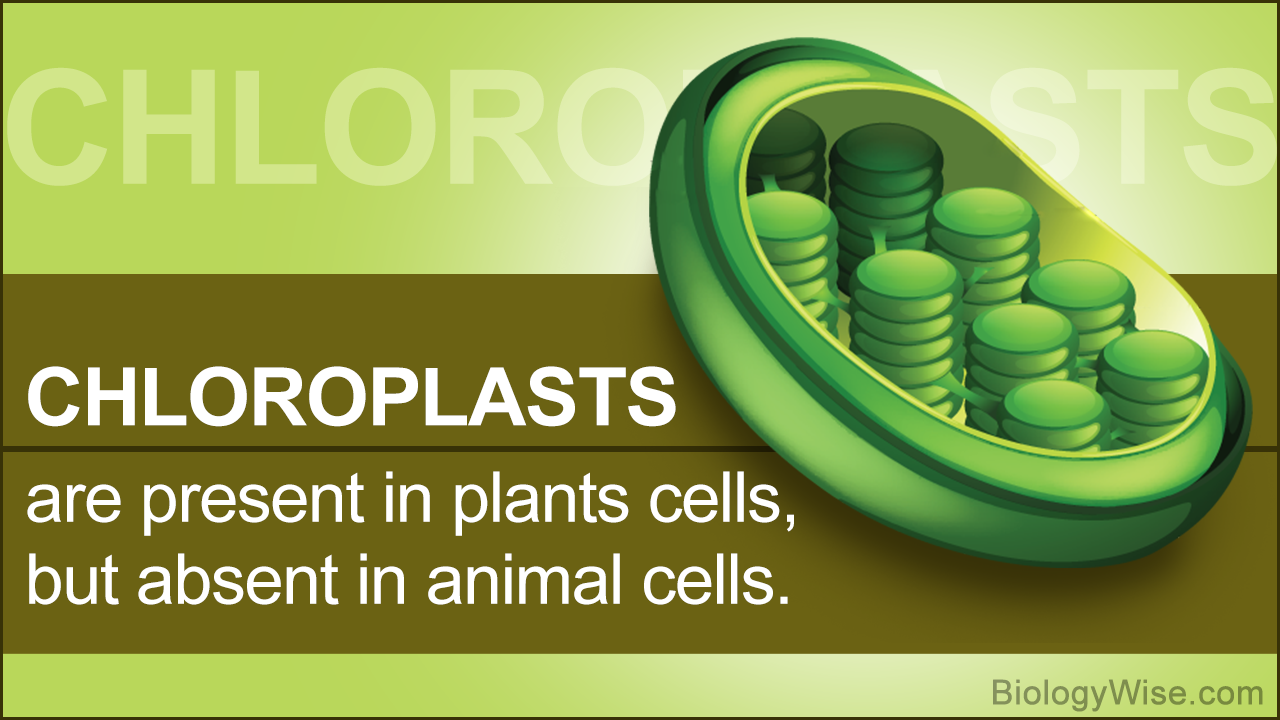
A plant cell consists of a cell wall, chloroplast and a large vacuole, while these parts and organelles are absent in an animal cell.
A cell is the basic living unit of every life process. Or in simpler terms, all living microbes, plants and animals have cells in common. But, the cell is different in certain aspects from one organism to another. For example, the cell of bacteria and blue-green algae (BGA) is of a primitive prokaryote type, while the cell of plants and animals are of an advanced eukaryote type. In general, a prokaryote lacks a membrane bound cell nucleus, whereas a eukaryote consists of membrane bound nucleus and organelles.
Depending upon the complexity of the organism, the number and types of cell differs. For example, amoeba is a simple eukaryote with only a single cell. On the contrary, there are 3 types of cells in a typical plant and more than 200 cell types in a highly evolved animal. Other than the cell types, there are several plant and animal cell differences. So, what are some differences between plant and animal cells?
Plant Cell and Animal Cell Differences
For a layman, the primary difference between plants and animals is that the former remains fixed, while the latter has the ability to move themselves from one place to another. But, there is more to this that differentiates a plant from an animal, in terms of their cell anatomical structure and parts. Listed below are some of the distinguishing features between a plant cell and an animal cell.


Cell Shape and Division
The shape of a plant cell is more or less rectangular, while that of an animal cell is circular. And the mode of cell division or cytokinesis in a plant cell is different from the animal cell. Cytokinesis in a plant cell takes place by formation of a cell plate, whereas it occurs with formation of a cleavage furrow in an animal cell.
Cell Wall
Cell wall is present in a plant cell, while it is absent in an animal cell. It is the outermost rigid, cellulose covering of the plant cell that provides protection and gives a definite shape. In an animal cell, the outer covering is plasma membrane, but not the plant cell. In brief, a plant cell has both a cell wall and plasma membrane, whereas an animal cell has only the plasma membrane.
Chloroplast
A major difference between a plant cell and an animal cell is the presence of chloroplast in plants, while it is absent in case of animals. It is the chloroplast in plants, which is responsible for harvesting light from the sun and performing photosynthesis in the presence of water and carbon dioxide. Thus, by means of photosynthesis, sugar is produced by plants and is circulated in the food chain.
Plastids
The organelle plastids are present in the cell of algae and plants, while they are absent in an animal cell. Plastids are responsible for production and storage of chemical compounds, including the plant pigments. Based on the type of plastids, the color of the cell varies. For example, chloroplasts are a type of plastids that are green in color.
Vacuole
Another significant plant and animal cell difference is the presence of a large-sized vacuole in a plant cell, while it is not so in an animal cell. The vacuole in a plant cell occupies about 90 percent volume and performs a specific function. In an animal cell, vacuoles are small, insignificant and many in number.
Cilia and Centrioles
Cilia are hairlike, locomotive projections present on the external surface of a cell. These projections are absent in a plant cell, whereas an animal cell has cilia in its outer surface. Similarly, the organelle centrioles are present in an animal cell, while it is absent in a plant cell.
Lysosomes
Lysosomes are organelles not evident in a plant cell, while they are found in an animal cell. These lysosomes are present in the cytoplasm of an animal cell and store enzymes for the breaking down of nutrient molecules.
In spite of the plant and animal cell differences listed above, there are common features shared by both the cell types. After all, both are eukaryotic and have complex membrane bound organelles. Thus, in the concluding note, each and every cell possess the basic requirements for keeping the organism alive in its prevailing environment.